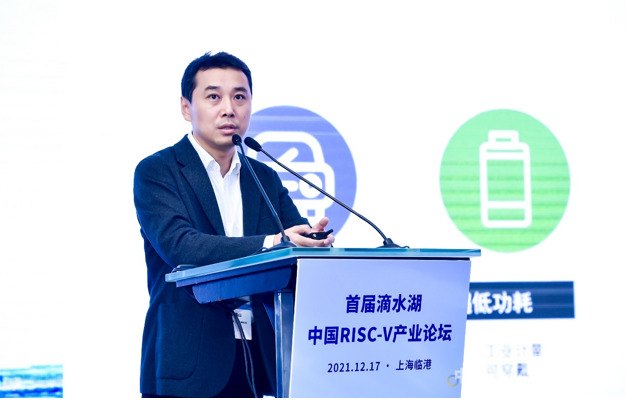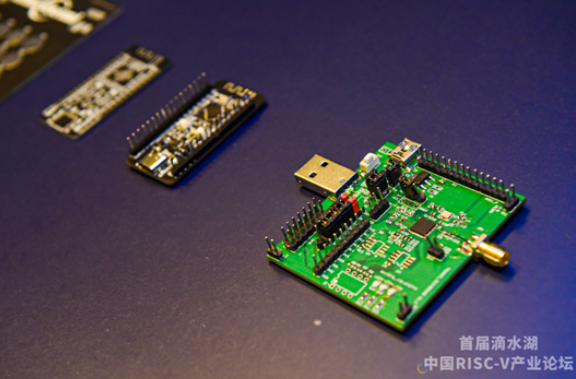In June 2021, Lingsi Microelectronics completed its Series A financing. According to the announcement at the time, the core team members of Lingsi Microelectronics have rich experience in wireless RF, communication algorithms, SOC design, and software solutions. It has now achieved mass production of the first Bluetooth BLE5.0/5.1 chip product, with key performance reaching a first-class level, and has passed the BLE5.xBQB certification, including a full set of RF, Linklayer, and MESH certifications.
Excellent wireless performance
According to public information on the Internet, Lingsi Microelectronics' Bluetooth BLE5.0/5.1 SoC product LE501X/LE511X series has the world's leading technical performance indicators. LE5010/5110 are SOC chips that support BLE5.0 and 5.1 full protocols respectively, and can be widely used in BLE application fields such as positioning, networking and data transmission.
Its comprehensive performance index is in the leading position in China, and its key index radio frequency has reached a relatively high international level, with a sensitivity of -100dBm@1Mbps, which ranks first in the world and exceeds that of its international counterparts by 4dBm. In terms of signal transmission, it integrates two PAs, and the link gain is 113dB@1Mbps.
In terms of transmission distance, the theoretical communication distance of 113dB can reach 400 meters, and the measured effective communication distance exceeds 200m (sending 0dBm, 1Mbps rate). If it is BLE 5.0, at a transmission rate of 125kbps, the communication distance is nearly one kilometer, which is relatively rare in Bluetooth applications.
In addition, Lingsiwei's products also have the advantage of low power consumption. The working power consumption is 4.3mA, and the lowest standby mode is only 600nA.
Third, Lingsiwei's products can be used in high-reliability and high-security industrial fields. They have built-in encryption modules, strong anti-interference and ESD resistance of up to 8000V.
Due to its excellent RF performance, low power consumption and high reliability, Lingsiwei's electronic products have obtained Alibaba's centralized procurement certification, the State Grid's IR46 meter standard, and have received batch orders from many benchmark customers such as Alibaba, Huawei, and the State Grid. In addition, based on the company's understanding of the consumer electronics market, Lingsiwei has actively defined a number of products including Bluetooth 5.2, UWB, and WIFI6, and will continue to make efforts in the fields of consumer electronics and industrial manufacturing.
The company has currently shipped over 30 million units.
From Arm to RISC-V
Recently, at the first Dishui Lake China RISC-V Industry Forum co-organized by the China RISC-V Industry Alliance, VeriSilicon Microelectronics and Shanghai Integrated Circuit Industry Cluster Development Promotion Organization, Wang Zhenshan, vice president of Lingsi Microelectronics, introduced the company's new generation of automotive-grade wireless MCU based on RISC-V - LE503X, which uses a RISC-V core based on Hematite E902.
In addition, Lingsiwei also has MCUs based on the Hematite E906 series.

Wang Zhenshan, Vice President of Lingsi Microelectronics
Wang Zhenshan said that the new product is a continuation of the previous Arm CM-0/CM-3 products. The choice of RISC-V for automotive chips is "the general trend". When Lingsiwei contacted many domestic manufacturers, the most important product demand it received was to ensure localization. In addition, from a cost perspective, the charging mechanisms of the two architectures, Arm and RISC-V, are also different. For chip industry startups, this reason is "very tempting". In addition, Wang Zhenshan also said that as the open source ecology and support system of RISC-V become more and more perfect, product development efficiency has also increased rapidly, and has not slowed down due to the replacement of the core.
With Lingsiwei's accumulation in the wireless field, LE503X performs particularly well in radio frequency and other aspects. The specific features are as follows:
High RF sensitivity: -99dBm@1Mbps, -106dBm@125Kbps
High RF link gain: 113dB@1Mbps, 120dB@125Kbps
Strong reliability: supports a wide operating temperature range of -25℃~125℃, and has an ESD resistance of 8KV;
Flexible I/O configuration: All GPIO interfaces can be flexibly configured as needed, and only 3 peripheral circuit devices are required;
Rich peripherals: integrated with 24-bit AD, LCD driver, TP, USB and other functions.

The first one on the right is an evaluation board equipped with the Lingsiwei MCU chip LE503x
Strong demand for in-vehicle wireless market
When talking about the demand for in-vehicle wireless market, Wang Zhenshan introduced the world's first wireless BMS system displayed by General Motors. Through 2.4GHz wireless technology, the battery module is not restricted by wiring harnesses, which can better meet communication and upgrade needs, while greatly reducing the size and weight of the BMS system.
Wang Zhenshan said that the combination of wireless, automotive regulations and MCU may become a new market breakthrough point, and Lingsiwei has corresponding strengths in these three aspects.
It is for this reason that Lingsiwei began to improve its specifications and methodologies in automotive-grade design, upgrading from a previous consumer and industrial wireless MCU supplier to an automotive-grade supplier.
Wang Zhenshan said that automotive-grade chips have more stringent requirements in all steps, from system and architecture design to verification and testing, and the final PCB, which means higher investment and engineers need to have many years of relevant experience. When making automotive-grade chips, the investment in equipment and engineer experience and knowledge is extremely complex.
"Overall, automotive-grade is a comprehensive capability that requires a systematic process operation system," said Wang Zhenshan.
Previous article:Meta continues to restructure: AI team merged into AR/VR department
Next article:element14 launches Arduino UNO Anniversary Design Challenge
Recommended ReadingLatest update time:2024-11-16 08:39





- Popular Resources
- Popular amplifiers
-
 Wireless Sensor Network Technology and Applications (Edited by Mou Si, Yin Hong, and Su Xing)
Wireless Sensor Network Technology and Applications (Edited by Mou Si, Yin Hong, and Su Xing) -
 Modern Electronic Technology Training Course (Edited by Yao Youfeng)
Modern Electronic Technology Training Course (Edited by Yao Youfeng) -
 Modern arc welding power supply and its control
Modern arc welding power supply and its control -
 Small AC Servo Motor Control Circuit Design (by Masaru Ishijima; translated by Xue Liang and Zhu Jianjun, by Masaru Ishijima, Xue Liang, and Zhu Jianjun)
Small AC Servo Motor Control Circuit Design (by Masaru Ishijima; translated by Xue Liang and Zhu Jianjun, by Masaru Ishijima, Xue Liang, and Zhu Jianjun)
- e-Network Community and NXP launch Smart Space Building Automation Challenge
- The Internet of Things helps electric vehicle charging facilities move into the future
- Nordic Semiconductor Launches nRF54L15, nRF54L10 and nRF54L05 Next Generation Wireless SoCs
- Face detection based on camera capture video in OPENCV - Mir NXP i.MX93 development board
- The UK tests drones equipped with nervous systems: no need to frequently land for inspection
- The power of ultra-wideband: reshaping the automotive, mobile and industrial IoT experience
- STMicroelectronics launches highly adaptable and easy-to-connect dual-radio IoT module for metering and asset tracking applications
- This year, the number of IoT connections in my country is expected to exceed 3 billion
- Infineon Technologies SECORA™ Pay Bio Enhances Convenience and Trust in Contactless Biometric Payments
- Innolux's intelligent steer-by-wire solution makes cars smarter and safer
- 8051 MCU - Parity Check
- How to efficiently balance the sensitivity of tactile sensing interfaces
- What should I do if the servo motor shakes? What causes the servo motor to shake quickly?
- 【Brushless Motor】Analysis of three-phase BLDC motor and sharing of two popular development boards
- Midea Industrial Technology's subsidiaries Clou Electronics and Hekang New Energy jointly appeared at the Munich Battery Energy Storage Exhibition and Solar Energy Exhibition
- Guoxin Sichen | Application of ferroelectric memory PB85RS2MC in power battery management, with a capacity of 2M
- Analysis of common faults of frequency converter
- In a head-on competition with Qualcomm, what kind of cockpit products has Intel come up with?
- Dalian Rongke's all-vanadium liquid flow battery energy storage equipment industrialization project has entered the sprint stage before production
- Allegro MicroSystems Introduces Advanced Magnetic and Inductive Position Sensing Solutions at Electronica 2024
- Car key in the left hand, liveness detection radar in the right hand, UWB is imperative for cars!
- After a decade of rapid development, domestic CIS has entered the market
- Aegis Dagger Battery + Thor EM-i Super Hybrid, Geely New Energy has thrown out two "king bombs"
- A brief discussion on functional safety - fault, error, and failure
- In the smart car 2.0 cycle, these core industry chains are facing major opportunities!
- The United States and Japan are developing new batteries. CATL faces challenges? How should China's new energy battery industry respond?
- Murata launches high-precision 6-axis inertial sensor for automobiles
- Ford patents pre-charge alarm to help save costs and respond to emergencies
- New real-time microcontroller system from Texas Instruments enables smarter processing in automotive and industrial applications
- TSMC and others attended the US summit and were strongly required to hand over commercial confidential data within 45 days
- About msp430g2553 timer to generate pwm
- Recruitment: Senior embedded development engineer in automotive electronics; based in Chengdu Pidu.
- Wake up the pyboard via PA0
- What exactly is the difference between IBUFDS and IBUFGDS
- RF Ground - RF is not what you think "ground" is
- Nuvoton 003 Series Platform MS51 Replacement Update N76E003 Guide V1.0
- I, I, I have a question about relays and analog switches...
- Smart TFT with LUA script, making Tetris is so easy
- Last day! Apply for GD32VF series development board and new ATMEGA4809 for free, grab the last train and get on it!

 Wireless Sensor Network Technology and Applications (Edited by Mou Si, Yin Hong, and Su Xing)
Wireless Sensor Network Technology and Applications (Edited by Mou Si, Yin Hong, and Su Xing)















 京公网安备 11010802033920号
京公网安备 11010802033920号